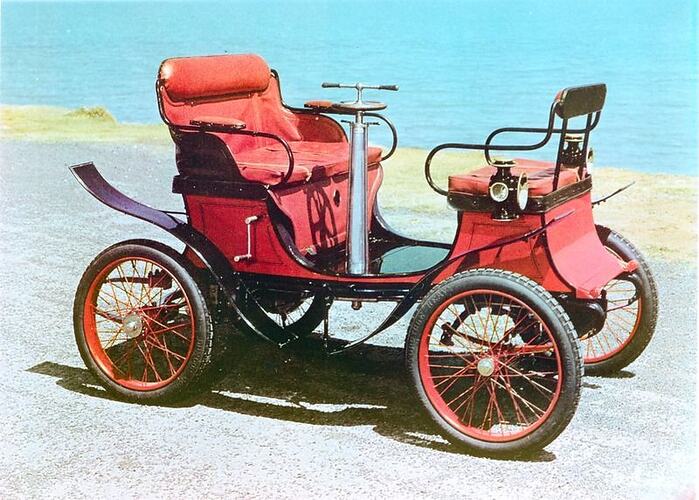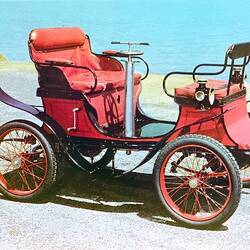The firm De Dion, Bouton et Trepardoux was formed in Paris 1883 to produce steam vehicles, especially steam-powered cycles. Count Albert De Dion became interested in internal combustion in the early 1890s which led to a split with his brother-in-law Trepardoux and the formation of De Dion, Bouton et Cie in 1894. The firm's 1895 model 137 cc air-cooled engine was used by other manufacturers of small motor vehicles known in France as 'voiturettes'.
By 1899, De Dion Bouton's own voiturette was in production with a high revving, 402 cc engine mounted at the rear. The vehicle featured a beam axle and suspension system of advanced design. No reverse gear was fitted and steering was by a vertical tiller type control with driver and passengers facing each other. By 1902, a more conventional front-engine, steering wheel equipped De Dion Bouton model was in production.
Up to the start of the First World War in 1914, De Dion Bouton was one of the most successful French automotive manufacturers with an extensive product range and considerable export sales success. The company produced commercial vehicles and cars between 1918 and 1950 but never recovered its pre-1914 success. In the 1920s the FR (3.5 ton) and FS (5 ton) trucks were produced and in Britain, coachwork and repairs were carried out from the firm's Woodside Works at High Road, North Finchley in London.
Henry Royce (of Rolls-Royce) purchased a De Dion Bouton voiturette as his first motor car on the advice of his doctor as a means of relaxation from overwork. One of the first women to receive her driving licence in Victoria did so in a two-cylinder De Dion in 1910. Ivy Rudd (nee Cole) received Victorian licence no. 14. Ivy was related to E.W. Cole of Cole's Book Arcade fame and was still driving 51 years later in her 1929 Rolls-Royce.
More Information
-
Keywords
-
Authors
-
Article types

